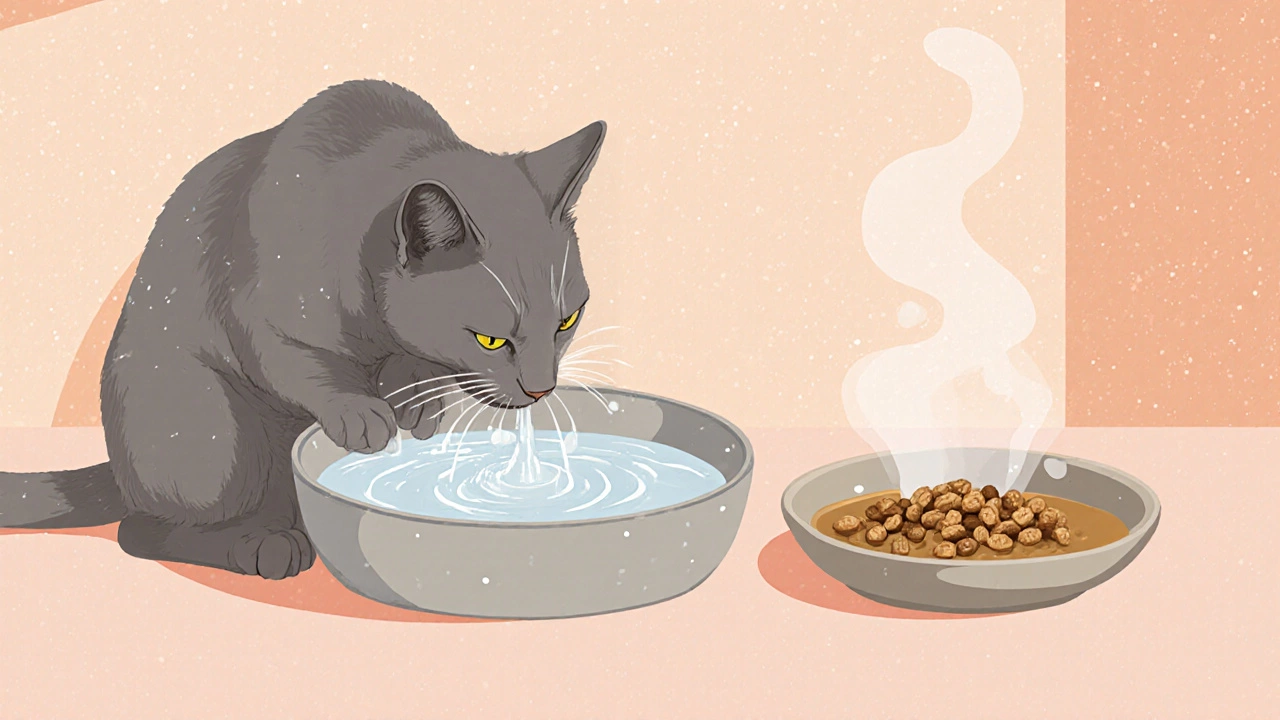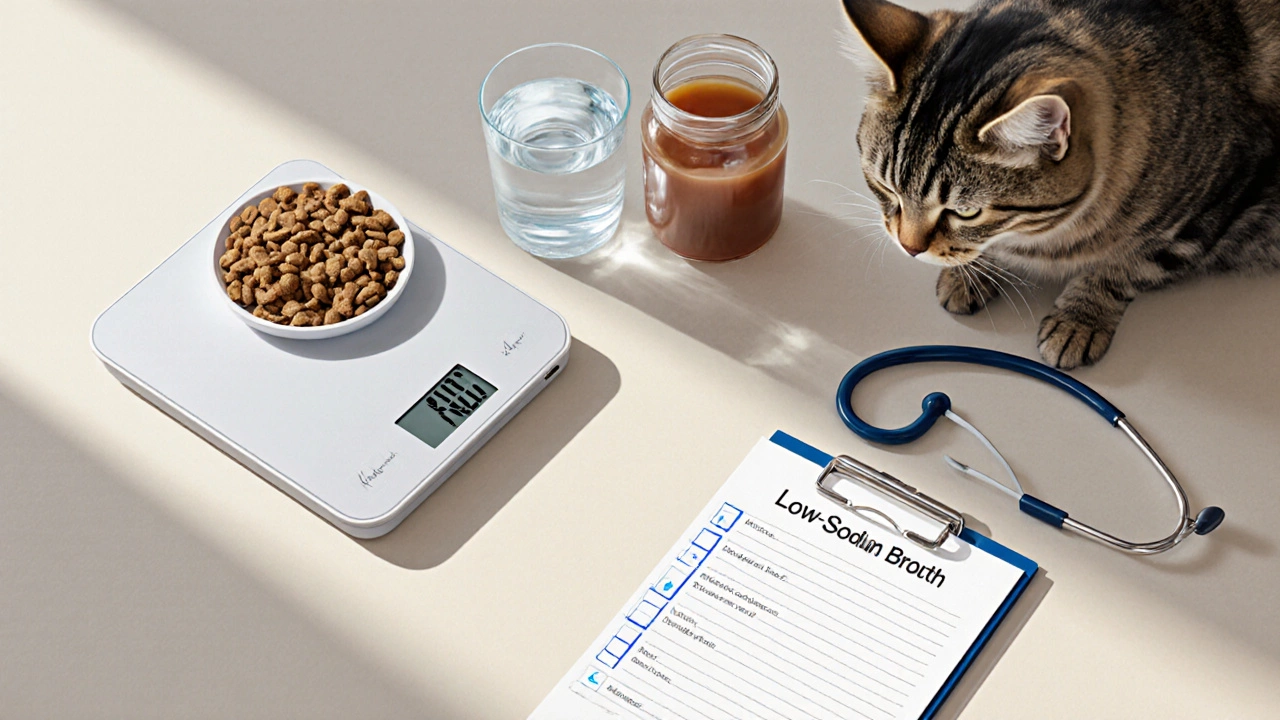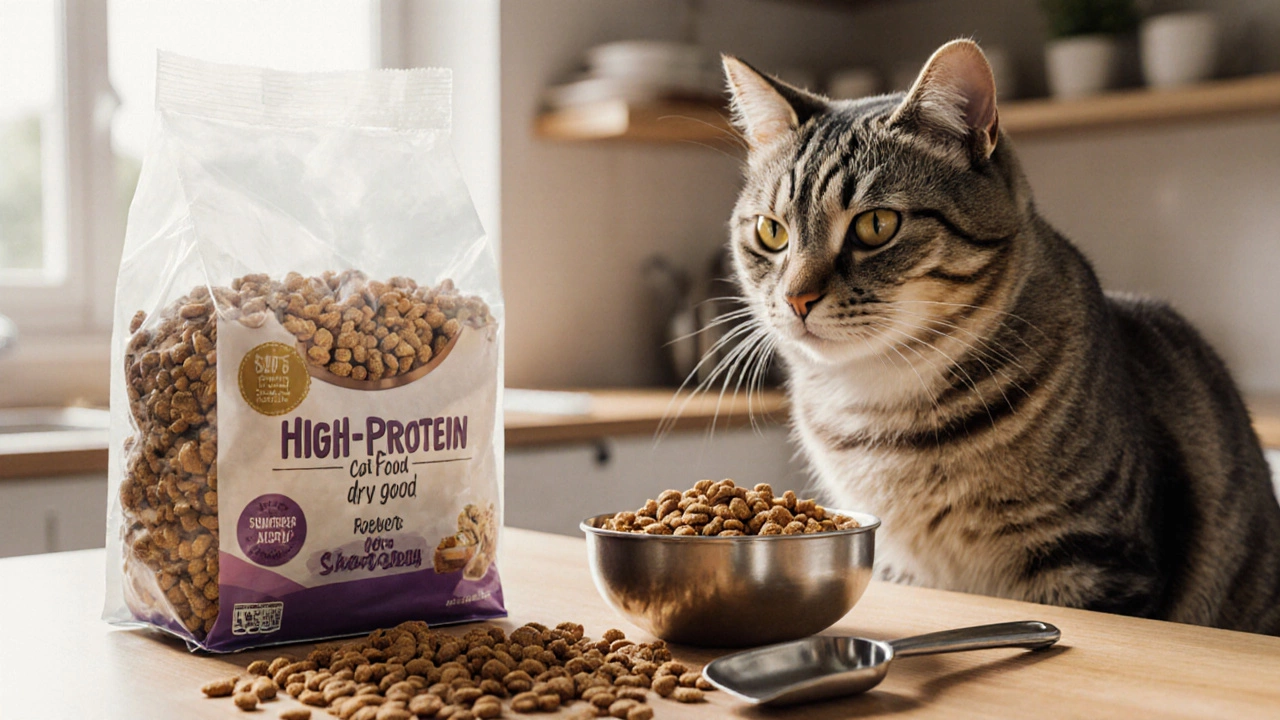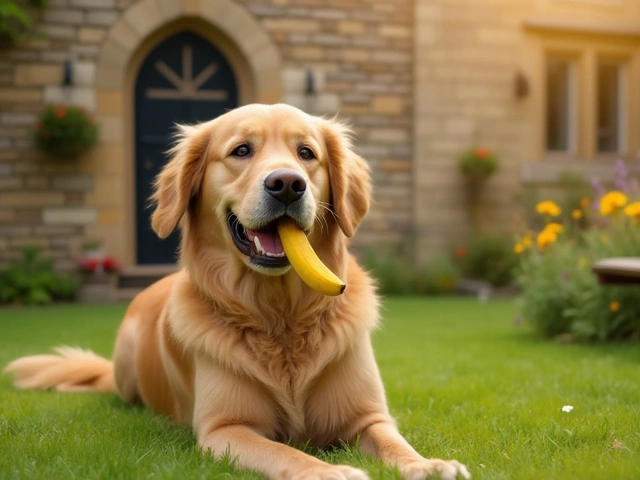Cat Hydration Calculator
Daily Hydration Calculator
Based on your cat's weight and dry food intake, determine how much additional water is needed for optimal health
Hydration Analysis
Minimum Daily Water Needed: 0 ml
Moisture from Dry Food: 0 ml
Additional Water Needed: 0 ml
Recommended Steps:
- Add 0ml of low-sodium broth to meals
- Use a cat fountain to encourage drinking
- Offer water in multiple locations
- Check urine color daily (light yellow is normal)
Quick Takeaways
- Dry kibble can meet a cat’s basic nutrient needs if you pick a high‑quality formula.
- Lack of moisture is the biggest health risk - especially for kidneys and urinary tract.
- Supplement water, rotate flavors, and watch weight to keep a dry‑only diet safe.
- Regular vet checks are essential when you skip wet meals.
- Mixing in a few wet meals or broth is the simplest way to boost hydration.
What a Cat Really Needs to Stay Healthy
Felines are obligate carnivores, which means they thrive on meat‑based proteins and very little carbs. The three pillars of a proper cat diet are protein, taurine, and moisture. Protein supplies the amino acids cats can’t make on their own; taurine, an amino‑acid derivative, is vital for heart and eye health; moisture supports kidney function and keeps the urinary tract clear.
When any of these elements dip too low, you’ll see signs like lethargy, hair loss, or frequent urination. That’s why understanding the nutritional profile of any food-dry or wet-is the first step to deciding if a dry‑only regimen will work for your pet.
Defining dry cat food: What’s Inside the Kibble?
At its core, dry cat food is a low‑moisture, extruded kibble made by mixing animal proteins, fats, carbohydrates, vitamins, and minerals, then baking or frying it to a moisture content of around 8‑10%. The extrusion process creates the crunchy shape you see in the bag, and it also extends shelf life.
Because the water is removed, manufacturers add extra vitamins and minerals to meet the AAFCO (Association of American Feed Control Officials) nutrient profiles. Premium brands often boost the protein percentage to 35‑40% and include animal‑derived taurine, while budget lines may rely on plant proteins that are less digestible.

Why Some Owners Prefer Dry‑Only Feeding
- Convenience: Dry kibble can sit out for hours without spoiling, making it ideal for busy households.
- Cost efficiency: Per‑calorie price is usually lower than wet food, especially when buying in bulk.
- Dental benefit: The crunchy texture can help scrub away some plaque, though it’s not a substitute for regular brushing.
- Storage: No refrigeration needed, which is handy for travel or outdoor cats.
These perks make dry food attractive, but they don’t eliminate the physiological needs we outlined earlier.
Potential Pitfalls of a Dry‑Only Diet
The biggest red flag is hydration. Cats naturally have a low thirst drive because their ancestors got most of their water from prey. When you serve only dehydrated kibble, they may not drink enough, leading to concentrated urine and an increased risk of urinary health issues such as crystal formation.
Other risks include:
- Kidney strain: Chronic low fluid intake can stress the kidneys over time.
- Obesity: Dry food is calorie‑dense; it’s easy to overfeed if you don’t measure portions.
- Nutrient loss: Heat processing can reduce heat‑sensitive nutrients like certain antioxidants.
- Digestive upset: Some cats react to the higher carbohydrate content common in dry formulas.
Making a Dry‑Only Diet Safer: Practical Tips
- Choose a high‑protein, grain‑free kibble with at least 35% protein and added taurine.
- Offer fresh water in multiple locations; consider a cat fountain to encourage drinking.
- Mix a splash of low‑sodium broth or warm water into the kibble to increase moisture without the expense of canned food.
- Add a small portion of wet food or freeze‑dried treats a few times a week if your budget allows; this little boost can dramatically improve overall water intake.
- Monitor weight weekly. Use a kitchen scale for precise portion control-typically ¼ cup per 5 lb of body weight, but adjust based on activity level.
- Schedule a veterinary blood panel every 6‑12 months to check kidney function, glucose, and cholesterol when feeding dry exclusively.
Following these steps turns a dry‑only plan from a gamble into a well‑balanced regimen.

Dry vs. Wet: Quick Comparison
| Feature | Dry Food | Wet Food |
|---|---|---|
| Moisture Content | 8‑10% | 75‑80% |
| Typical Protein % | 35‑40% | 70‑80% |
| Shelf Life | 12‑18 months unopened | 2‑3 weeks refrigerated |
| Cost per kcal | Low | Higher |
| Dental Benefit | Some plaque reduction | Minimal |
| Hydration Support | Low - needs supplemental water | High - provides most daily water |
Sample Daily Feeding Checklist for a Dry‑Only Cat
- Measure kibble according to the label and your cat’s target weight.
- Add 1‑2 Tbsp warm water or broth per meal; stir and let sit 5 minutes.
- Refresh water bowls at least twice a day; use a fountain if possible.
- Observe litter box: normal urine color should be light yellow, not dark amber.
- Record weight weekly; adjust portions if you see a 5% gain or loss.
- Schedule vet check‑up: blood work, urinalysis, and dental exam.
Frequently Asked Questions
Can a cat survive on dry food forever?
Yes, a cat can live a full life on high‑quality dry kibble if you supplement water and monitor health. The key is to choose a formula with adequate protein, taurine, and added moisture through broth or water.
Why do cats seem less interested in drinking water?
In the wild, cats get most of their water from prey. Domesticated cats retain that low‑thirst instinct, so they rely on food for hydration. When the diet is dry, you have to make water more appealing-think fountains or adding moisture to the kibble.
Will dry food cause urinary crystals?
Dry diets can increase the risk because they produce more concentrated urine. However, a high‑moisture kibble, plenty of fresh water, and regular vet checks can keep crystals at bay.
Is it okay to mix a little wet food with dry kibble?
Absolutely. Adding a spoonful of wet food or a splash of broth 2‑3 times a week boosts moisture and variety without breaking the budget.
How often should I weigh my cat on a dry‑only diet?
Weekly weighing works for most indoor cats. Adjust portions if you see more than a 5% change in body weight over two weeks.





